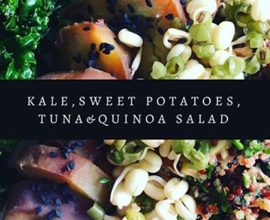
Are you being unwittingly supersized?
Written by Ravinder Lilly – Nutritionist and Health Writer
It’s official. Obesity has overtaken smoking as the leading cause of premature death and illness in Australia. And the problem is mirrored in New Zealand where Ministry of Health figures show that more than one in four men and women are obese and within the Maori population, a staggering 40.7 per cent of men and 48.1 per cent of women are classified obese!
Do you have portion distortion?
If you do, you’re not alone. Portion distortion is a phrase coined by an established scientist and author, Dr Brian Wansink. In his many studies, he’s shown that as our portion sizes have grown over the last twenty years, so have our waistlines and our weight.
At the same time, being more and more sedentary means that less energy is used up. Storing this excess energy leads to weight problems and increases the risk of conditions like heart disease and stroke.
Food culprits
It seems that large quantities of cheap-ish food have distorted our perception of what a typical portion size looks like. So much so, that today if you were offered a 200ml coffee at the coffee shop instead of a 400ml grand with whipped cream and all the extras, you might well feel a bit short-changed!
But with much larger portion sizes around, we’re becoming to think of them as being a standard or normal serve. And this could mean that we’re indulging without thinking, something that US expert Dr Brian Wansink might call ‘mindless eating’.
In his many studies, he’s proven that if you present people with larger portions, they eat what they’re given. In other words, people eat more without actually acknowledging that they are doing so.
In one famous study by Cornell University Food and Brand Lab, people who were given larger bowls served themselves and consumed 16 per cent more cereal than those who were eating out of smaller bowls.
Even more worryingly, Dr Wansink has shown that when people are given bigger plate-wear, we eat more food even if don’t like the food we’re eating!
Other studies show that despite the fact that the larger bowl-eaters eat more, they estimate that they consumed less than they actually ate. And it’s this kind of mindless eating that’s fuelling our obesity explosion.
Eating just a little more than you need over time adds up. For example, eating 50 calories per day more than you burn adds up to 18,250 calories over a year. And that adds up to a massive 5kg per year! Yet 50 calories is the same as 10 peanuts or 25g of steak or 7g butter or two extra tablespoons of rice.
Most of us tend not to jump on small weight gains which in time can turn into big problems!
So what can you do?
Serving smaller portions and using smaller crockery and glassware could help you make the small changes that add up to better health results. Using large dinnerware causes us to serve more and eat more without noticing it. In a way, large plates, bowls and glasses trick the mind into believing we’ve eaten less. So eat from smaller plates and bowls, pre-portion your foods – you’ll need to weigh and measure foods to get an idea of the right size for you. Log onto CalorieKingTM to find out the calories in your preferred foods. You’ll also get an idea about the size and weight that’s considered an ‘average’ portion.
And don’t be tempted by supersize meals – they might sound like more bang for your buck, but they’re actually more bang on your bottom line!
Note:
What is overweight? This is defined as having a body weight greater than is desirable for good health and is indicated by a body mass index (BMI) between 25 to 29.9 kg/m
What is obesity? This is defined as an excess of total body fat and is indicated by a BMI of ≥30 kg/m2.




